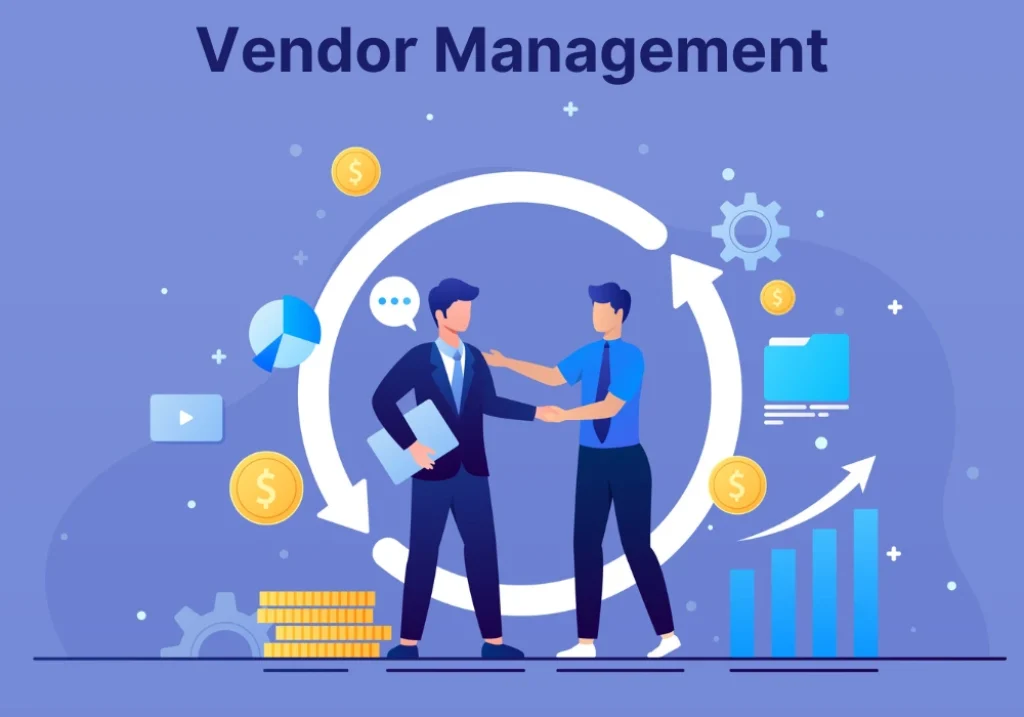
Vendor Lifecycle Management (VML) is a critical framework for businesses that depend on external suppliers or service providers to achieve operational efficiency.
VML refers to the comprehensive process of managing vendors throughout their engagement, starting with identification and ending with offboarding.
An effective VML strategy can create measurable advantages by streamlining operations, reducing costs, and fostering stronger vendor relationships.
Table of Contents
The Core Stages of Vendor Lifecycle Management

Source: happay.com
Now let us address the core stages of vendor lifecycle management.
Vendor Identification and Sourcing
Choosing the right vendor is a foundational step in VML.
Companies need to evaluate potential vendors against specific criteria such as cost efficiency, compliance standards, scalability, and reputation.
Tools like Vendor Management Software simplify this process by offering analytics and comparison tools, making it easier to shortlist candidates.
Key techniques for vendor assessment include:
- Performing background checks to ensure credibility.
- Leveraging industry benchmarks for evaluating performance history.
- Considering vendor compatibility with long-term business goals.
Vendor Onboarding
Proper onboarding ensures a smooth integration of the vendor into existing workflows.
Best practices include aligning vendor systems with organizational policies, conducting compliance training, and using technology to streamline the process.
Vendor Management Software automates document management, policy distribution, and system integrations, reducing administrative workload and minimizing delays.
Effective onboarding fosters collaboration and creates a foundation for productive vendor relationships.
Contract Negotiation and Management

Source: chacc.co.uk
A clear, well-negotiated contract sets the tone for a successful partnership.
It is crucial to define the terms, obligations, and deliverables in detail while allowing flexibility for adjustments.
Organizations benefit from a systematic contract review process that ensures fairness and compliance with regulatory standards.
Key considerations include:
- Establishing clear performance metrics in the contract.
- Creating clauses for risk sharing and conflict resolution.
- Periodic reviews to adapt contracts to evolving business needs.
Performance Monitoring and Relationship Building
Performance monitoring is essential to ensure vendors meet their commitments.
Using scorecards, feedback systems, and real-time metrics enables businesses to assess vendor contributions effectively.
Regular evaluations also identify areas for improvement.
Maintaining strong relationships with vendors requires mutual respect, open communication, and periodic reviews of shared goals.
Building trust encourages vendors to invest more in the partnership, ultimately benefiting both parties.
Risk Management and Compliance
Proactive risk management protects businesses against potential disruptions.
Identifying risks early and implementing mitigation strategies can save costs and avoid operational inefficiencies.
Ensuring compliance with legal and regulatory frameworks is equally important.
Techniques for managing risks include:
- Conducting regular audits to verify compliance.
- Using technology to track real-time compliance metrics.
- Establishing protocols for incident response.
Vendor Offboarding and Renewal Decisions

Source: graphiteconnect.com
Offboarding vendors is often overlooked but is vital to maintaining operational integrity.
Efficient offboarding includes retrieving proprietary information, finalizing payments, and documenting the partnership’s conclusion.
Evaluating vendor performance helps determine whether to renew or terminate contracts.
Steps for a structured offboarding process include:
- Conducting an exit interview to gather feedback.
- Ensuring all contractual obligations are met.
- Archiving relevant documents for future reference.
Conclusion
Effective Vendor Lifecycle Management is essential for modern businesses aiming to maximize efficiency and profitability.
By focusing on each stage of the vendor lifecycle and addressing common pitfalls, organizations can unlock substantial benefits.







